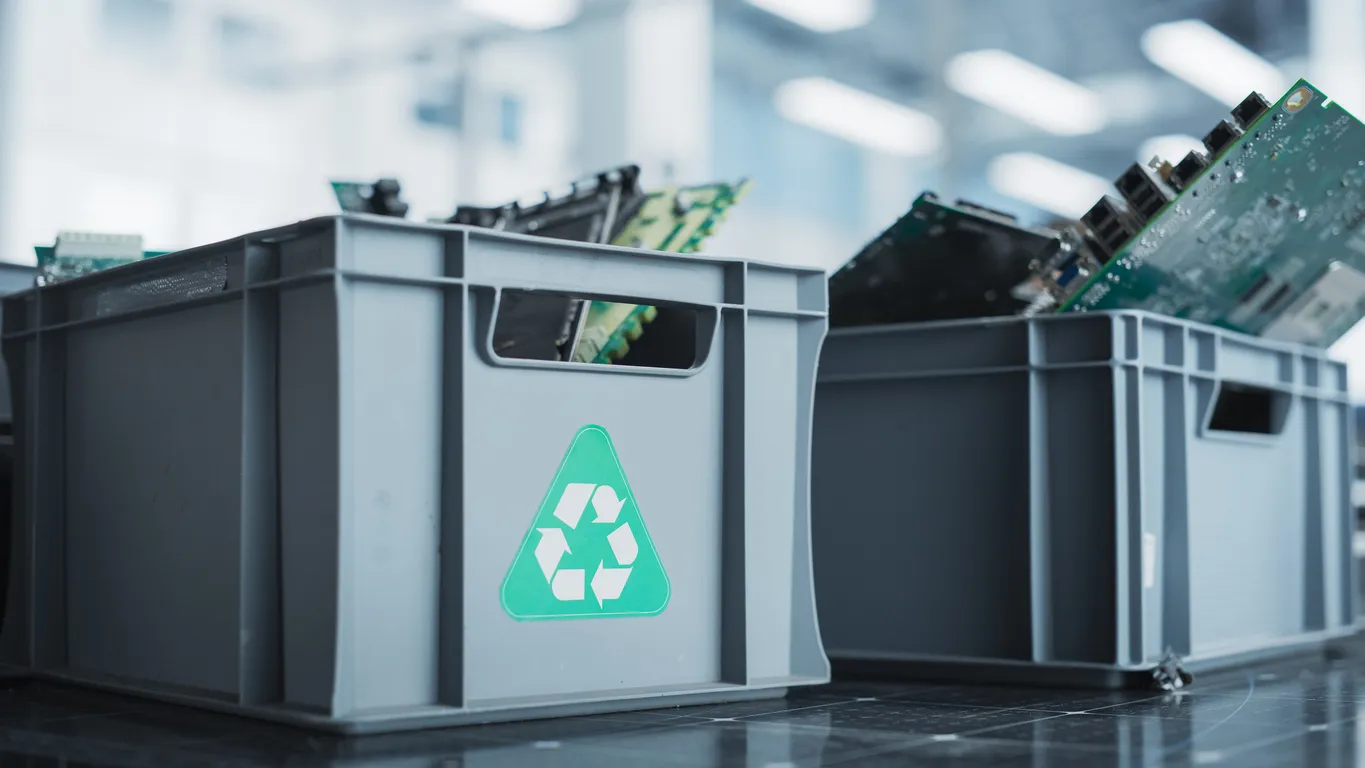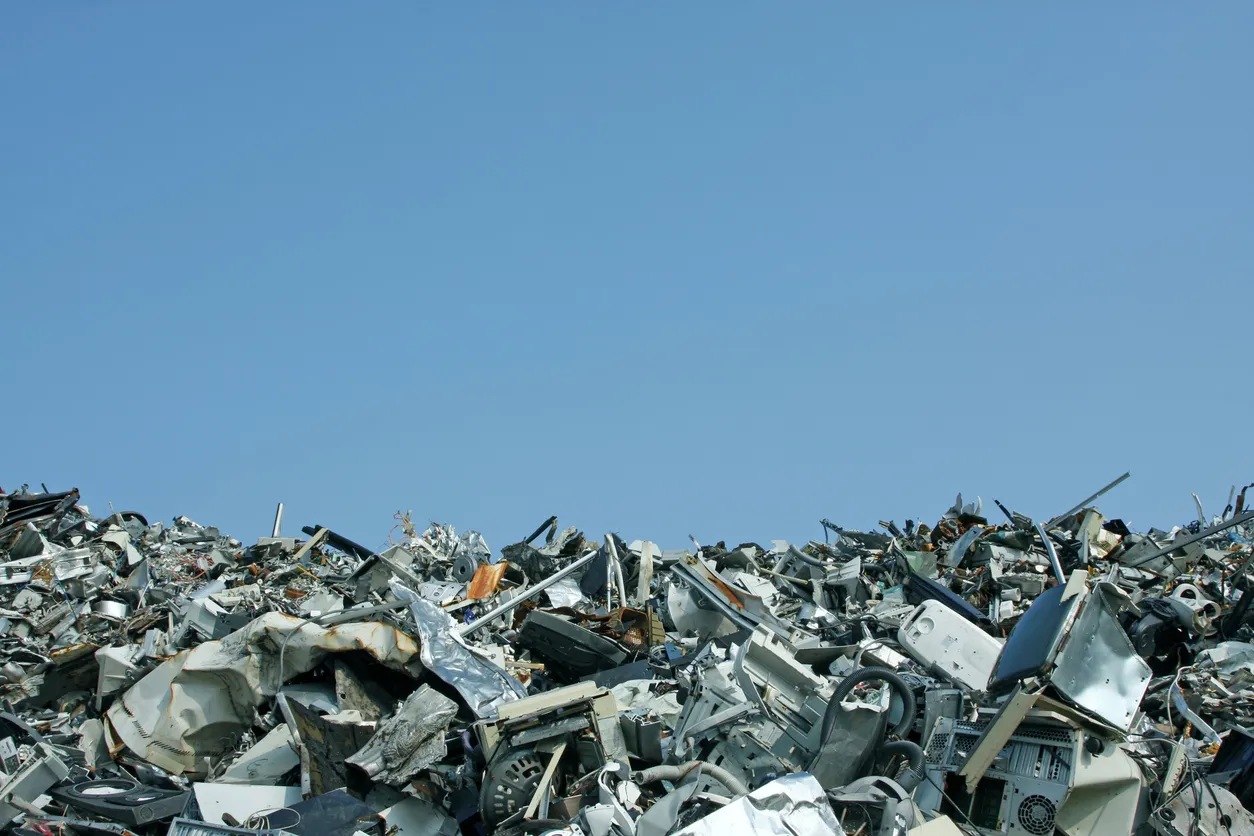Unpacking the Real Costs of IT Asset Disposal in the UK
With the average data breach in the UK now costing over £3.4 million, understanding the transparent pricing of IT Asset Disposal (ITAD) is more critical than ever. This guide dives deep into the factors that shape IT asset disposal costs across the UK, breaking down each element, explaining its impact, and illustrating real-world scenarios. You’ll explore five key cost influencers – secure data destruction, logistics, WEEE compliance, value recovery, and lifecycle management – and uncover smart strategies to optimise your spending. Alongside expert insights, you’ll see how Astralis Technology’s certified ITAD services deliver unwavering compliance, robust security, and sustainable value recovery.
IBM Cost of a Data Breach Report 2024
The 2024 IBM Cost of a Data Breach Report highlights that the average cost of a data breach in the UK escalated to £3.58 million between March 2023 and February 2024. This marks a 5% increase from the previous year, underscoring the escalating financial repercussions of cyber incidents for organisations, largely driven by lost business and the expenses associated with post-breach recovery efforts.
This research directly validates the article’s assertion regarding the average cost of a data breach in the UK, providing a precise and current figure that underscores the significant financial risks associated with insufficient IT asset disposal security.
What Drives the Costs of IT Asset Disposal in the UK?
ITAD pricing is a mosaic of specific services, each contributing defined operational, regulatory, and recovery value. The core components include secure data destruction, collection and transportation fees, WEEE compliance charges, potential value recovery offsets, and strategic lifecycle planning. Grasping these elements brings clarity when you’re comparing quotes and negotiating with service providers.
How Does Data Destruction Influence ITAD Pricing?
Certified data destruction is a cornerstone of security and cost. Whether through physical shredding, degaussing, or software wiping, each method demands distinct equipment and labour, directly impacting service fees. (See our guide on hard drive destruction vs data erasure for deeper insights.)
- The chosen method dictates equipment investment and processing speed.
- Location – whether on-site or off-site – can add security premiums or unlock volume-based savings.
- Accreditation levels, such as ADISA or ISO 27001, factor into audit and documentation expenses.
Secure data destruction is not merely an expense; it’s a vital investment that ensures GDPR compliance and shields you from costly data breach liabilities.
Certified destruction fees are calculated by combining the service method, location, certification level, and asset volume into precise pricing structures. Providers balance equipment depreciation, labour costs, and compliance documentation to determine these fees.
What Is the Cost Difference Between On-site and Off-site Data Destruction?
On-site destruction offers the highest level of security but comes with premium transport and equipment setup costs. Off-site shredding provides economies of scale and lower unit costs, while maintaining a secure chain of custody.
Opting for on-site destruction enhances compliance assurances for highly sensitive data and supports audit-ready processes.
How Do Certification and Compliance Affect Data Destruction Fees?
Accreditations like ADISA, CESG, and ISO 27001 necessitate rigorous audit trails, secure logistics, and certified operator training. The associated documentation and periodic external audits incur administrative fees, ensuring transparency and legal defensibility.
What Are the Pricing Factors for Physical Destruction vs. Data Wiping?
Physical destruction methods, such as shredding or degaussing, involve equipment capital costs and waste management fees. Data wiping relies on licensed software and technician time. The device type, data density, and validation processes all influence the final rates.
Why Is Certified Data Destruction Essential for GDPR Compliance?
The GDPR mandates the irreversible erasure of personal data before device disposal. Certified destruction provides legally admissible proof, significantly reducing the risk of Information Commissioner’s Office (ICO) fines and reinforcing your data protection obligations under the Data Protection Act 2018 (read more in our GDPR-compliant IT asset disposal blog).
Data protection in the UK is governed by the UK General Data Protection Regulation (UK GDPR) and the Data Protection Act 2018. These regulations mandate that personal data must be handled with appropriate security and retained only for as long as necessary. Article 17 of the UK GDPR specifically grants individuals the “right to erasure,” also known as the “right to be forgotten,” requiring organisations to delete personal data under certain conditions. This citation confirms the legal framework for data protection in the UK, reinforcing the article’s focus on GDPR compliance and the necessity of certified data destruction methods to mitigate regulatory fine risks and ensure legal defensibility.
Legal requirements surrounding data privacy and protection directly influence the scope of secure disposal services and their associated fees. GDPR mandates irreversible erasure of personal data through certified methods, strict chain-of-custody protocols, and detailed destruction certificates. Compliant workflows command premium service fees that reflect the necessary audit and documentation overhead.
The ICO can impose fines of up to £17.5 million or 4 percent of global turnover for serious breaches. Investing in certified ITAD services mitigates this exposure, transforming potential liabilities into controlled operational costs. Legally recognised certificates of destruction, asset manifests, and audit logs form the evidential foundation of compliant disposal. Service providers generate these records, incurring an incremental administration cost to ensure full traceability. Certified providers possess recognised accreditations and insurance, lowering risk premiums and audit burdens for your organisation. Outsourcing to accredited specialists consolidates fees into predictable service packages and frees up your internal teams for more strategic activities.
What Role Do Logistics and Collection Fees Play in ITAD Costs?
Transport and handling costs are influenced by distance, the volume of assets, and the necessary security measures. Larger collections often qualify for tiered discounts, while collections in more remote areas may incur travel surcharges.
Logistics expenses fluctuate based on region and collection frequency. Planning consolidated pickups can significantly reduce per-unit transport costs and maintain a secure chain of custody for your assets. This is especially true for IT asset disposal in London.
Efficient asset collection minimises transport and handling charges while rigorously maintaining chain-of-custody and data security.
How Does Asset Volume Influence Collection Charges?
Larger volumes benefit from palletised shipments and bulk-rate discounts. Smaller batches may incur minimum-charge surcharges, which can be mitigated through coordinated consolidation efforts.
- Consolidating assets from multiple offices to a central collection point reduces per-unit transport costs.
- Scheduling regular pickups helps avoid last-minute expedite fees.
- Volume thresholds can trigger declining price bands for frequent disposal requirements.
Strategic volume planning transforms logistics from a cost centre into a strategic advantage and streamlines asset tracking.
What Geographic Factors Affect IT Equipment Collection Costs?
Urban centres generally have lower travel expenses and a higher density of service providers. Conversely, remote or rural locations may incur higher per-mile rates. Centralised courier hubs and multi-site scheduling can effectively neutralise distance-related surcharges.
Why Is Secure Transport Important and How Does It Affect Pricing?
The use of sealed containers, GPS-tracked vehicles, and security-cleared drivers provides enhanced assurance but requires specialised resources. These elevated transport controls increase insurance coverage and audit readiness, typically at a predictable fee premium.
What Are Best Practices for Efficient IT Asset Collection?
Implementing strategic practices can reduce both fees and risk:
- Aggregate assets into pallet-sized consignments for optimal loading efficiency.
- Clearly label containers with asset details to expedite processing.
- Coordinate drop-off schedules to align with provider delivery routes.
- Maintain accurate manifests to speed up customs or site-security checks.
Adopting these measures helps cut unnecessary fees and accelerates turnaround times.
How Do WEEE Compliance Requirements Affect Disposal Expenses?
The Waste Electrical and Electronic Equipment (WEEE) Regulations mandate specific recycling procedures and environmental reporting, passing producer responsibility charges onto end-users. Fees for processing, testing, and recycling compensate authorised centres and fund producer compliance schemes (PCS).
WEEE compliance integrates environmental responsibilities into your disposal budget. Producers are required to fund collection schemes, maintain meticulous records, and submit annual reports to Defra and the Environment Agency.
How Do the WEEE Regulations 2025 Amendments Impact ITAD Pricing?
Recent amendments expand producer registration obligations for online marketplaces and raise minimum recycling targets. Businesses can expect increased PCS fees and must ensure disposal through authorised channels, leading to higher per-unit costs.
What Are the Charges for Hazardous IT Waste Disposal?
Specialised handling of items like batteries and fluorescent lamps requires dedicated disposal streams and certified carriers. Per-item charges reflect the necessary safety protocols and specialised recycling methods.
How Do Environmental Reporting and Producer Compliance Schemes Influence Costs?
Administrative fees for compliance schemes cover data collection, scheme audits, and regulator submissions. Annual reporting ensures traceable e-waste streams but adds fixed operational charges to your overall expenditure.
What Are the Financial Risks of Non-Compliance with WEEE and GDPR?
Failing to comply can result in civil penalties, removal from approved waste streams, and significant reputational damage. ICO fines for GDPR breaches and Defra enforcement notices can run into tens of thousands of pounds, far exceeding the cost of proactive disposal investments.
Mapping UK e-waste flows: key insights
An independent study commissioned by Material Focus, conducted by Anthesis Group, the University of Lancaster, Repic, and Valpak, investigated the flows of Waste Electrical and Electronic Equipment (WEEE) in the UK. The study, using 2017 as a baseline, aimed to develop a robust inventory of how WEEE moves through the UK economy, identifying discrepancies between electrical equipment sold and reported collected/treated, and informing recommendations to improve recycling rates. This research provides essential background for the WEEE compliance requirements discussed in the article, highlighting the complexities and challenges in managing e-waste and underscoring the importance of adhering to regulations for environmental responsibility.
In What Ways Can IT Asset Remarketing Offset Disposal Costs?
Remarketing transforms retired hardware into a revenue stream, effectively reducing your net disposal expenditure. Devices retaining residual value are assessed, refurbished, and resold, with the upside often shared with channel partners.
- Asset valuation establishes fair market pricing based on age, condition, and market demand.
- Refurbishment enhances functionality, leading to improved resale margins.
- Revenue-sharing models divide proceeds between the provider and client, offsetting disposal fees.
Remarketing actively supports Environmental, Social, and Governance (ESG) objectives by extending equipment lifecycles and diverting e-waste from landfills.
Asset remarketing taps into secondary markets to recover tangible value, effectively reducing your net disposal costs by the resale proceeds. Discover strategies in our UK buyer’s guide to maximising IT resale value.
What Is the Process for IT Asset Valuation and Resale?
Specialists meticulously assess each device’s model, age, condition, and configuration. Accredited channels then market refurbished units or individual components to enterprise buyers, maximising potential returns.
How Do Refurbishment Costs Affect Net Value Recovery?
Investing in cleaning, component replacement, and software re-licensing can boost resale prices, but this must be carefully balanced against potential revenue. A strategic refurbishment approach can enhance net recovery by up to 25 percent.
What Revenue Share Models Are Common in IT Asset Remarketing?
Providers typically offer fixed purchase agreements, auction-style consignment, or percentage-split models. Transparent revenue sharing ensures that service incentives are aligned with your value realisation goals.
How Does Remarketing Support ESG Goals and Circular Economy Initiatives?
Remarketing extends equipment lifespans, contributing to reduced carbon emissions and electronic waste. Demonstrating commitment to circular economy practices enhances your corporate sustainability reporting and supports vital ESG commitments.
How Does IT Asset Lifecycle Management Influence Total Disposal Costs?
Proactive lifecycle planning integrates procurement, usage, and end-of-life management, optimising the total cost of ownership (TCO). Early ITAD planning can identify remarketing opportunities and schedule maintenance to extend asset lifespan.
- Lifecycle audits map your asset inventory and forecast residual values.
- Scheduled refresh cycles maximise return on investment (ROI) and minimise disruptive bulk disposals.
- Integrated IT Asset Management (ITAM) and ITAD workflows ensure predictable budgeting and lower final disposal expenses.
A holistic approach to lifecycle management minimises unexpected charges and aligns ITAD strategies with your broader asset management objectives.
Integrating disposal planning into your broader IT Asset Management (ITAM) framework drives long-term savings and enhances operational predictability.
What Is the Total Cost of Ownership (TCO) for IT Assets Including Disposal?
TCO encompasses procurement, maintenance, support, remarketing returns, and end-of-life disposal fees. Allocating a specific disposal budget from the outset ensures transparent asset budgeting and prevents unforeseen write-offs.
How Can Early ITAD Planning Reduce Final Disposal Costs?
Scheduling refresh cycles in alignment with warranty expirations and lease terms helps avoid expedited disposal surcharges. Early planning also identifies optimal remarketing windows to maximise residual value.
What Are the Costs and Benefits of IT Asset Audits and Inventory Management?
Regular audits incur modest consulting or software licensing fees but yield accurate asset inventories, compliance reporting, and effective risk mitigation. Detailed records prevent unexpected disposal events and enable proactive value recovery.
How Does Integrating ITAD Into ITAM Improve Cost Efficiency?
A unified ITAM-ITAD platform automates inventory updates, flags asset retirement triggers, and coordinates logistics with data destruction workflows. This integrated approach significantly reduces administrative overhead and smooths disposal budgeting.
Frequently Asked Questions About IT Asset Disposal Costs in the UK
Here are concise answers to frequently asked questions regarding ITAD costs in the UK.
How Much Does It Cost to Dispose of IT Equipment in the UK?
Typical disposal fees range from £20 to £150 per device, influenced by the data destruction method, WEEE charges, and logistics variables.
Is IT Asset Disposal Free for UK Businesses?
While some providers offer basic recycling for low-value items at no charge, fees typically apply for certified data destruction, WEEE compliance, and secure transportation.
What Factors Most Affect ITAD Pricing in the UK?
The primary cost drivers include the data destruction method, collection logistics, WEEE fees, asset volume, and the potential for remarketing.
How Are Hard Drive Destruction Costs Calculated?
Costs depend on whether the destruction is on-site or off-site, the drive’s capacity, and the certification level, generally ranging from £5 to £20 per drive.
How Do You Calculate Total IT Asset Disposal Costs?
Sum the destruction fees, transport charges, and WEEE compliance levies, then subtract any remarketing revenue to determine your net disposal expenditure.
What are the environmental impacts of improper IT asset disposal?
Improper disposal of IT assets can lead to significant environmental harm, including soil and water contamination from hazardous materials like lead and mercury found in electronic devices. E-waste that ends up in landfills contributes to the growing problem of electronic waste, which is one of the fastest-growing waste streams globally. By adhering to proper disposal methods, businesses can mitigate these risks and support sustainable practices, ensuring that valuable materials are recycled and hazardous substances are handled safely.
How can businesses ensure compliance with GDPR during IT asset disposal?
To ensure compliance with GDPR during IT asset disposal, businesses must implement certified data destruction methods that guarantee the irreversible erasure of personal data. This includes maintaining a strict chain of custody and obtaining certificates of destruction from service providers. Regular audits and training for staff on data protection regulations are also essential. By prioritising compliance, organisations can avoid hefty fines and protect their reputation while ensuring that sensitive information is securely managed throughout the disposal process.
What are the benefits of using a certified ITAD provider?
Utilising a certified ITAD provider offers numerous benefits, including enhanced security, compliance with regulations, and reduced risk of data breaches. Certified providers adhere to industry standards, ensuring that data destruction methods are effective and legally compliant. They also provide documentation and audit trails that demonstrate compliance with GDPR and WEEE regulations. Additionally, these providers often have established networks for asset remarketing, which can help recover value from retired equipment, ultimately reducing overall disposal costs.
What should businesses consider when choosing an IT asset disposal partner?
When selecting an IT asset disposal partner, businesses should consider several factors, including the provider’s certifications, experience, and reputation in the industry. It’s essential to evaluate their data destruction methods, compliance with relevant regulations, and the transparency of their pricing structure. Additionally, inquire about their environmental policies and commitment to sustainability. A reliable partner will also offer comprehensive services, including logistics, asset tracking, and reporting, to ensure a seamless and compliant disposal process.
How can businesses track their IT asset disposal for compliance purposes?
Businesses can track their IT asset disposal for compliance by implementing an asset management system that logs each step of the disposal process. This includes maintaining detailed records of asset inventories, destruction certificates, and transport documentation. Regular audits and reconciliations of these records can help ensure accuracy and compliance with regulations. Additionally, partnering with a certified ITAD provider can streamline this process, as they typically offer tracking and reporting services that enhance transparency and accountability.
What are the potential penalties for non-compliance with IT asset disposal regulations?
Non-compliance with IT asset disposal regulations, such as GDPR and WEEE, can result in severe penalties, including hefty fines and legal action. For GDPR breaches, fines can reach up to £17.5 million or 4% of global turnover, depending on the severity of the violation. Additionally, businesses may face reputational damage, loss of customer trust, and potential removal from approved waste streams. Ensuring compliance through proper disposal practices is crucial to avoid these risks and maintain operational integrity.
Secure Your Data, Optimise Your Costs.
Partner with Astralis Technology for certified IT asset disposal that ensures unwavering compliance, robust security, and sustainable value recovery. Get a tailored assessment today to transform potential liabilities into controlled operational costs.
Four key takeaways emerge: secure data destruction is a non-negotiable premium under GDPR; logistics and WEEE compliance introduce variable regional and regulatory fees; remarketing offsets disposal outlay by unlocking hidden asset value; and proactive lifecycle planning consolidates TCO for predictable budgeting. Partnering with a certified ITAD specialist like Astralis Technology ensures transparency, regulatory peace of mind, and sustainable cost control.





